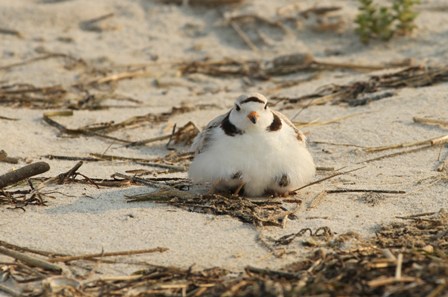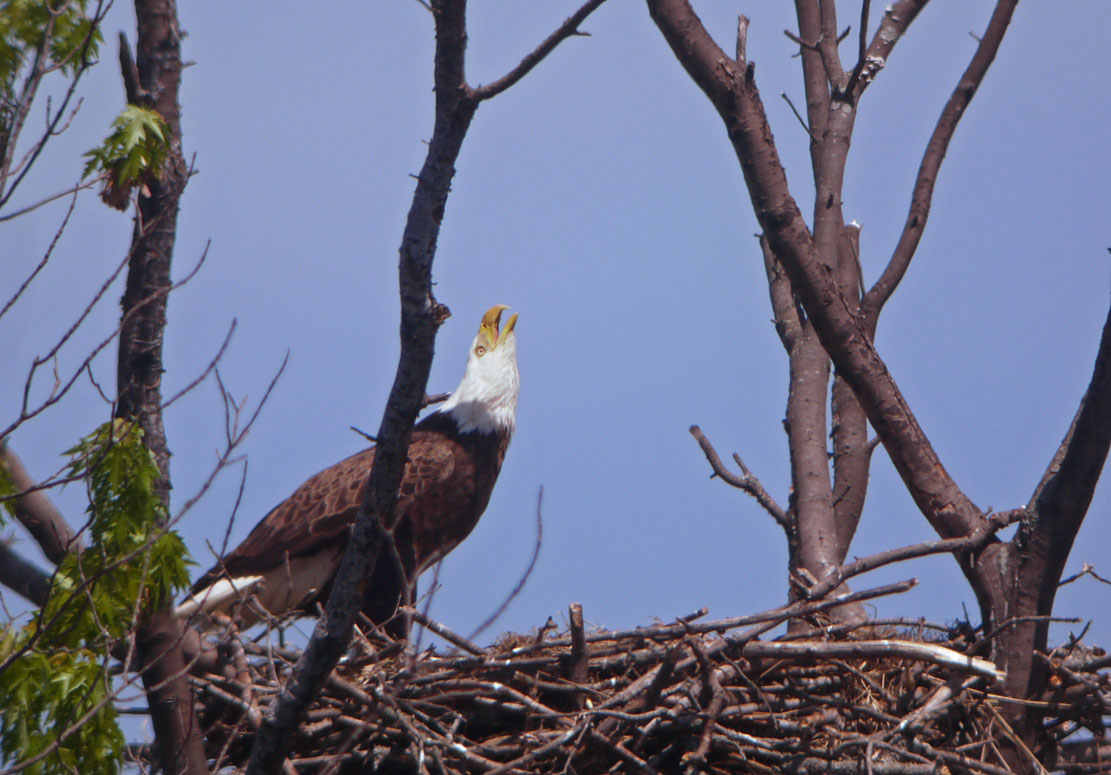|
May 2012
Dear Friends,
 Well, it is my first spring after returning to Massachusetts, and an exciting one it has been. Migrant warblers and nesting phoebes are keeping us company here at Mass Audubon HQ. This past weekend, I was able to participate in my first Bird-a-thon, joining our Bird Conservation team with Joan Walsh, Matt Kamm, and David Sibley. Note that you still have time to donate to our Bird Conservation or Important Bird Areas teams to ensure that birds, particularly those that are declining in the state, are receiving the conservation attention they need. Well, it is my first spring after returning to Massachusetts, and an exciting one it has been. Migrant warblers and nesting phoebes are keeping us company here at Mass Audubon HQ. This past weekend, I was able to participate in my first Bird-a-thon, joining our Bird Conservation team with Joan Walsh, Matt Kamm, and David Sibley. Note that you still have time to donate to our Bird Conservation or Important Bird Areas teams to ensure that birds, particularly those that are declining in the state, are receiving the conservation attention they need.
This month also marks the launch of our new citizen science initiative -The Big Barn Study. Mass Audubon will be organizing camp and school groups to participate, and we hope that you can help out as well. Also, check out the Oystercatcher Cam we have collaboratively set up in Buzzards Bay to see the full spectrum of breeding behavior from these incredibly fascinating birds (I admit I am a bit biased, having done my graduate work on this species!).
Thank you all once again for your interest in Bird Conservation!
Kim
Kimberly Peters, Ph.D.
Chief Scientist/Director of Bird Conservation
The Big Barn Study! 
Mass Audubon is proud to announce the launch of its newest citizen science conservation project: The Big Barn Study! The goal of The Big Barn Study is to learn more about barns, bridges, and other structures where at-risk bird species such as Cliff Swallows and Barn Swallows make their homes. By mapping and observing these sites and checking for the presence of birds during the breeding season, we can gain valuable insight into how these birds are faring.
The Big Barn Study won't succeed without the help of enthusiastic volunteers like you. Volunteer citizen scientists will choose a barn or bridge near them, visit it three times during the breeding season to check for swallows, and report their findings using our handy online reporting tool. It's that easy!
Interested in helping Mass Audubon protect swallows? Learn more about why we're doing The Big Barn Study at our brand-new project website. While you're there, brush up on your swallow identification, and learn more about the science behind The Big Barn Study.
Piping Plovers Get Off to an Early Start
 This March, when Coastal Waterbird Program field assistants were busy erecting symbolic fencing on beaches to protect nesting birds that would soon be arriving from wintering grounds, many Piping Plovers were already defending territories! By early April, the anxiously awaited text message went around—“first eggs laid.” By the end of April, 80 pairs of plovers monitored by Mass Audubon had nested—more than twice as many as in years 2009-2011. The total number of birds has not changed, but many more than usual have laid their eggs in April. This March, when Coastal Waterbird Program field assistants were busy erecting symbolic fencing on beaches to protect nesting birds that would soon be arriving from wintering grounds, many Piping Plovers were already defending territories! By early April, the anxiously awaited text message went around—“first eggs laid.” By the end of April, 80 pairs of plovers monitored by Mass Audubon had nested—more than twice as many as in years 2009-2011. The total number of birds has not changed, but many more than usual have laid their eggs in April.
Long term studies of nest initiation show earlier laying dates are linked to warming climates—specifically, to increases in the growing season. On Cape Cod, our winter months in 2012 were 6° F higher on average than the past ten years. It’s quite possible that the early nesting activity of our plovers is in part a response to the remarkably mild winter we had this year.
For Coastal Waterbird Program field staff, the enthusiastic nesting of plovers has made April and May busier than ever. With a lot of management and protection, and with a little luck, we hope to see the birds fledge their young early and head back to the Bahamas by the middle of the summer.
Bald Eagles are Newest Neighbors at Arcadia

Mass Audubon is thrilled to have a pair of Bald Eagles nesting for the first time at Arcadia Wildlife Sanctuary in Easthampton and Northampton. This hallowed event is not only a first for Arcadia, it’s also the first-ever breeding of Bald Eagles on any Mass Audubon property.
The eagles were noted courting as early as late winter, and by March the female was observed incubating on a substantial new nest located in a large silver maple. The nest currently contains at least one chick, a youngster that is believed to have hatched on or very close to Earth Day (i.e., April 22). How timely!
Because Arcadia Wildlife Sanctuary also hosts a large Great Blue Heron colony, it will be interesting to observe whether the presence of these new residents will impact the nesting herons. Since both species are large birds that construct conspicuous stick nests in open situations it is reasonable to expect some interactions.Time will tell.
In the meantime everyone at Mass Audubon, as well as in the sanctuary neighborhood is ecstatic to have Bald Eagles nesting on the property. Stay tuned for more details!
|
